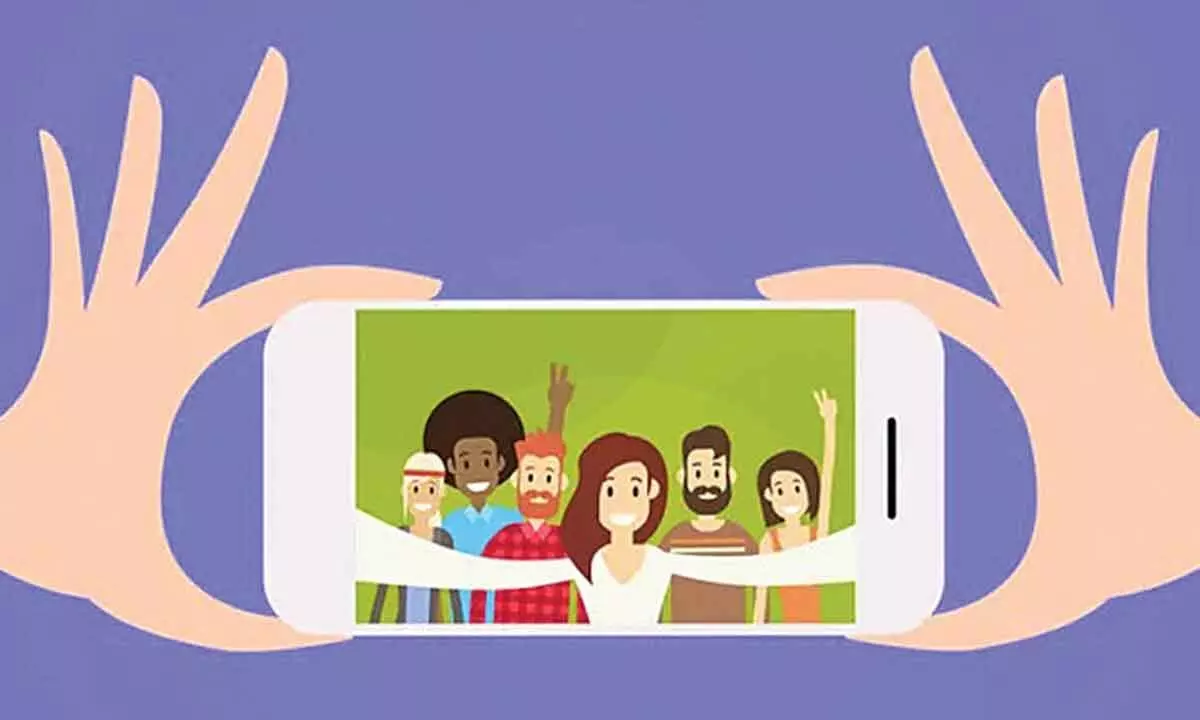Introspecting the good and bad of taking selfies
We can untag unflattering photos of us or pick how we want ourselves to be portrayed
image for illustrative purpose

Social media has also introduced ‘the fear of missing out’. This keeps young people attached to their phones admiring others rather than being fully present in their real lives. Many may feel as though their accomplishments, social lives, fun moments and physical appearance have lesser merit if they are not accounted for on social media
‘Selfie’ is defined as a photograph that one has taken of oneself, typically with a smartphone or webcam and shared via social media.
Opinions surrounding selfies have always been divided. Some believe that taking selfies can be harmful as it could promote narcissism, unrealistic physical expectations and eventual comparisons. Others believe that selfies can empower, as we are able to freely express ourselves.
Here is taking a look at the benefits and detriments of our generation’s relationship with selfies, and in turn, social media:
Most selfies are taken to remember experiences, showcase our travels, recording special moments or people. I find myself taking selfies during solo travels. I feel more comfortable in pulling funny faces on my own, instead of when someone else is taking photos of me. Group selfies are not as “posed” compared to stand-alone photos, as they help capture the essence of the present emotion and the feeling of being around people you are comfortable with.
As humans, we have our social needs. We are hardwired to crave human connection. With the rise of the use of social media, selfies can be used in a different light, where we can pair our photos with encouraging captions. Whether we are supporting a cause, documenting our recovery journey, or being confident enough to own our body – selfies allow us to freely express what we feel.
One of the main differences between us in real life versus online is the greater ability to change our look and mask our identity. We have more control over social media: we can untag or delete unflattering photos of us, or pick how we want ourselves to be portrayed. With ever-developing technology, we have greater access to tools that allow us to shape who we are and highlight specific features in ways we could not do as easily offline. Examples of these are applications such as Facetune or Photoshop, which allows users to edit their photos into their ideal selves.
The Boston University School of Medicine’s dermatology department reported that people go to plastic surgeons requesting “fuller lips, bigger eyes, or a thinner nose” that they see in photo filters. The “Snapchat dysmorphia” trend is a clear after-effect of comparisons on social media.
We also have the “keyboard warriors”. With the ability to be anonymous online, people seem to have more pluck in harshly criticising or shaming someone. Hence, our young people become more exposed to self-esteem issues.
Social media has also introduced ‘the fear of missing out’. This keeps young people attached to their phones admiring others rather than being fully present in their real lives. Many may feel as though their accomplishments, social lives, fun moments and physical appearance have lesser merit if they are not accounted for on social media.
Peggy Phelan, a Stanford University professor who has written about photography and feminist issues commented, “Women who use themselves or their own self-image are often dismissed as narcissistic. It’s a way of censoring, particularly, women and young people.” By posting photos of ourselves constantly, the belief that it can become an addiction is understandable. It is no denying that this may cause reliance on gratification and likes.
On the other hand, Phelan has also shared that selfie-taking can prompt important questions: What is the self? Who is the self? And how many versions of the self are there? And is the self only a persona? “These kinds of questions are the essential, deep questions. And many people use the selfie as a means of exploring those,” she contends.
The next time you take a selfie, think about what it personally means to you and if it shows who you really are. Also, have fun! It’s not just about how chiselled your jawline would look, if you got the right angle, or if there’s a blemish on your face. Let your authenticity be louder than the façade!
Previous research has indicated that capturing the physical experience of an event or its broader meaning are two primary motivations for taking personal photos.
For instance, a person at the beach with a friend may take a photo of the ocean to document the physical experience of the beautiful and relaxing day. Alternatively, they could take a photo with themselves in it to capture the deeper meaning of spending time with that friend.
Activity on social media is at its zenith. Putting up selfies on Facebook and other social networking sites allows people to enjoy instant love. As they start comparing comments and likes on their pictures, the quest to be unique and to be the most talked-about increases.

